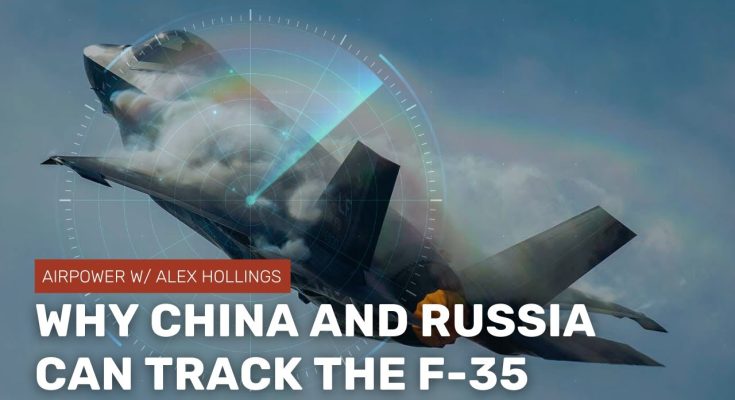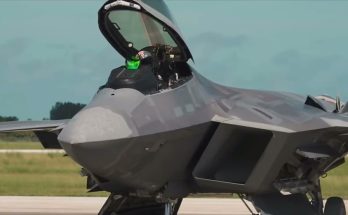The F-35 Lightning II, a fifth-generation stealth fighter designed by Lockheed Martin, is widely regarded as one of the most advanced and stealthy aircraft in the world. However, despite its cutting-edge technology and advanced stealth features, both China and Russia have developed systems capable of tracking the F-35, undermining its supposed invisibility in certain combat situations. Several factors contribute to why these nations can detect the F-35, even though it was specifically designed to avoid radar detection.
Stealth Isn’t Invisible, Just More Difficult to Detect
The key to understanding why China and Russia can track the F-35 lies in the limitations of stealth technology. Stealth does not render an aircraft completely invisible to radar; it simply reduces its radar signature by minimizing the aircraft’s radar cross-section (RCS) and using materials and designs that scatter or absorb radar waves. The F-35’s design includes advanced coatings, a carefully shaped airframe, and other techniques to make it harder for enemy radar to detect the aircraft. However, these stealth characteristics are not foolproof.
Stealth works best when an aircraft is approaching a radar system from a specific angle, and when it is flying at certain altitudes and speeds. If the F-35 is not flying at optimal conditions or if the radar systems are operating in certain frequency bands, the aircraft’s stealthiness may be less effective.
Russia and China’s Advanced Radar and Sensor Systems
Both China and Russia have invested heavily in advanced radar and sensor systems capable of detecting stealth aircraft like the F-35. While stealth technology can reduce the effectiveness of conventional radar systems, more advanced systems have been developed that can detect these aircraft under certain conditions.
- Russia’s L-Band Radar: One of the most prominent technologies that Russia has developed to track stealth aircraft is its L-band radar systems. These radar systems operate at a lower frequency than traditional radar, which allows them to detect objects with a smaller radar cross-section, such as stealth aircraft. These systems are less affected by the radar-absorbing materials used on stealth aircraft, giving Russia the ability to track the F-35 under specific conditions. Russia’s early-warning radar systems, such as the Nebo-M, are also capable of detecting stealth aircraft at long ranges by using multiple frequency bands and multi-static radar networks.
- China’s JY-27 Radar: China has similarly invested in radar systems that can detect stealth aircraft. The JY-27, a long-range, 3D radar system, is a key part of China’s growing ability to track stealth fighters. The JY-27 operates in the S-band radar frequency, which is capable of detecting stealth aircraft like the F-35 at medium and long ranges. China’s growing network of radar systems and integration with other surveillance platforms, such as satellites and unmanned aerial systems (UAS), enhances its ability to track aircraft at greater distances.
Other Factors Affecting F-35 Stealth
- Electronic Warfare (EW): Stealth aircraft rely not only on physical features but also on the use of electronic warfare (EW) systems to avoid detection. However, Russia and China have developed sophisticated electronic warfare capabilities that can detect, jam, or deceive the radar and sensors used by stealth aircraft. EW systems can disrupt communications, radar, and even weapon guidance systems, and may be able to detect the F-35’s electronic emissions or spoof the radar signature of the aircraft, making it easier for enemy systems to track it.
- Infrared Sensors: Another method of detecting stealth aircraft, including the F-35, is through infrared sensors. The F-35 is designed to minimize its heat signature, but modern infrared sensors have become much more capable of detecting and tracking aircraft, even stealth ones. Russia and China have invested in advanced infrared tracking systems that can detect heat emissions from aircraft engines, even at long ranges. These sensors can provide additional data to track stealth aircraft, particularly in low-light conditions or at higher altitudes.
- Multilayered Detection Networks: Both China and Russia have integrated their radar systems into multilayered detection networks. These networks combine data from a variety of sensors, including radars, satellites, ground-based systems, and infrared sensors. By fusing data from multiple sources, these countries can create a more comprehensive picture of the battlefield, increasing the chances of detecting stealth aircraft like the F-35. Even if the aircraft is able to evade one detection system, it may still be picked up by others within the network.
Conclusion
While the F-35 represents a major leap forward in terms of stealth technology and has a much smaller radar cross-section compared to previous-generation aircraft, it is not completely invisible to modern radar and sensor systems. Russia and China have developed highly advanced radar, infrared sensors, and electronic warfare systems that can track or counteract the F-35’s stealth capabilities, particularly under specific conditions. This is a reminder that stealth technology, while effective, is not foolproof and must be complemented with other tactics, such as advanced sensors, evasive maneuvers, and a networked approach to warfare. As adversaries develop increasingly sophisticated detection methods, the concept of “stealth” will continue to evolve, and the F-35 will likely face growing challenges to maintain its dominance in contested airspaces.



